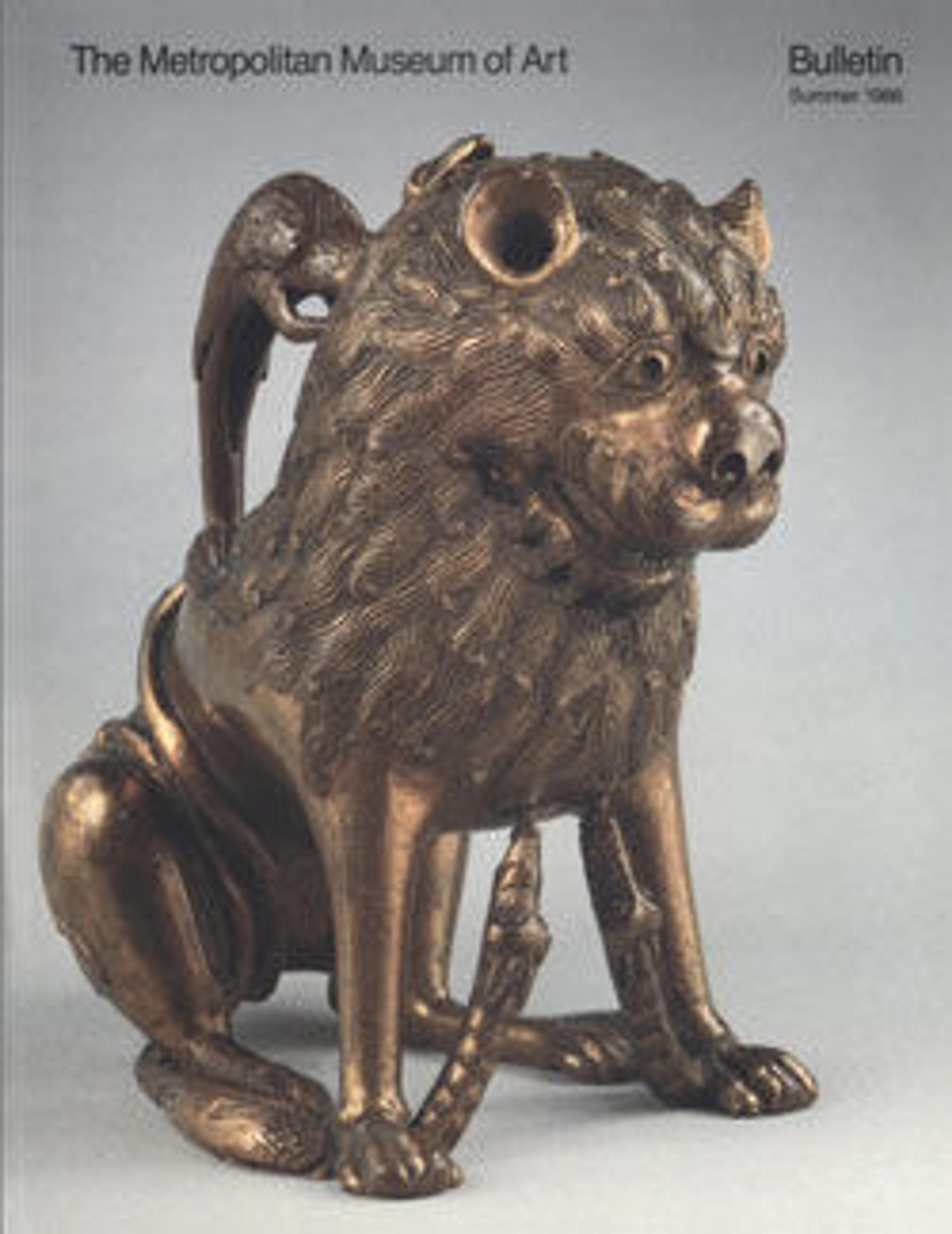Aquamanile in the Form of a Crowned Centaur Fighting a Dragon
The crowned centaur (probably Chiron, the king of the centaurs),wielding a sword in his right hand, appears about to slay the dragon attacking his left side. Already representing a fantastic beast, the form here is further enriched by the dragon whose head and neck, grasped in the centaur’s left hand, form the spout.
Artwork Details
- Title:Aquamanile in the Form of a Crowned Centaur Fighting a Dragon
- Date:1200–1225
- Geography:Made in possibly Hildesheim, Lower Saxony, Germany
- Culture:German
- Medium:Copper alloy
- Dimensions:14 3/8 × 13 3/4 × 5 in., 8.3 lb. (36.5 × 34.9 × 12.7 cm, 3786g)
- Classification:Metalwork-Copper alloy
- Credit Line:Rogers Fund, 1910
- Object Number:10.37.2
- Curatorial Department: Medieval Art and The Cloisters
Audio
9792. Kids: Aquamanile in the Form of a Crowned Centaur Fighting a Dragon
0:00
0:00
We're sorry, the transcript for this audio track is not available at this time. Please email info@metmuseum.org to request a transcript for this track.
More Artwork
Research Resources
The Met provides unparalleled resources for research and welcomes an international community of students and scholars. The Met's Open Access API is where creators and researchers can connect to the The Met collection. Open Access data and public domain images are available for unrestricted commercial and noncommercial use without permission or fee.
To request images under copyright and other restrictions, please use this Image Request form.
Feedback
We continue to research and examine historical and cultural context for objects in The Met collection. If you have comments or questions about this object record, please contact us using the form below. The Museum looks forward to receiving your comments.
